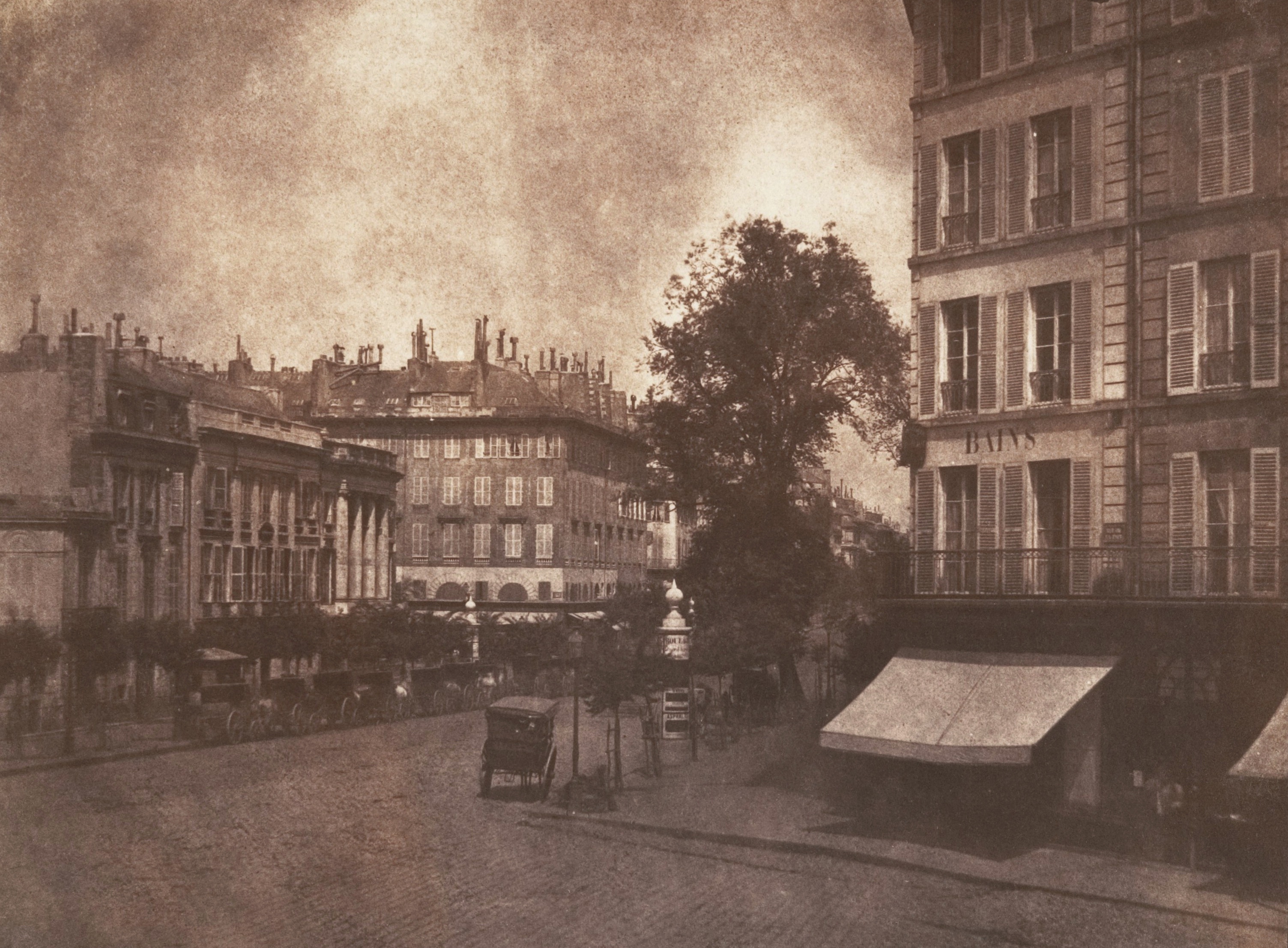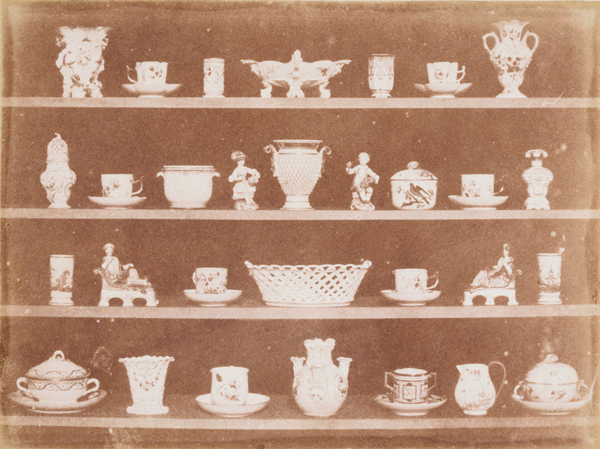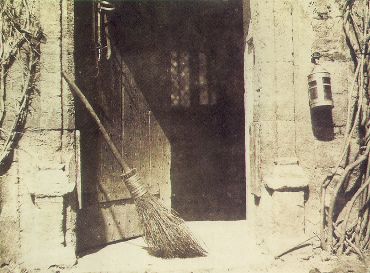The Pencil Of Nature on:
[Wikipedia]
[Google]
[Amazon]
 ''The Pencil of Nature'' is an 1844 book by
''The Pencil of Nature'' is an 1844 book by





 The 24 plates in the book were carefully selected to demonstrate a wide variety of potential applications for photography. They include a variety of architectural studies, scenes,
The 24 plates in the book were carefully selected to demonstrate a wide variety of potential applications for photography. They include a variety of architectural studies, scenes,
 ''The Pencil of Nature'' is an 1844 book by
''The Pencil of Nature'' is an 1844 book by William Henry Fox Talbot
William Henry Fox Talbot (; 11 February 180017 September 1877) was an English scientist, inventor, and photography pioneer who invented the Salt print, salted paper and calotype processes, precursors to photographic processes of the later 19th ...
. It is notable for being the first commercially published book to be illustrated with photograph
A photograph (also known as a photo, or more generically referred to as an ''image'' or ''picture'') is an image created by light falling on a photosensitivity, photosensitive surface, usually photographic film or an electronic image sensor. Th ...
s.
Published by Longman, Brown, Green & Longmans in six fascicles between 1844 and 1846, the book detailed Talbot's development of the calotype
Calotype or talbotype is an early photographic process introduced in 1841 by William Henry Fox Talbot, using paper coated with silver iodide. Paper texture effects in calotype photography limit the ability of this early process to record low ...
photographic process and included 24 calotype prints, each one pasted in by hand, illustrating some of the possible applications of the new technology. It is regarded as an important and influential work in the history of photography
The history of photography began with the discovery of two critical principles: The first is camera obscura image projection; the second is the discovery that some substances are visibly altered by exposure to light. There are no artifacts or de ...
and was described by the Metropolitan Museum of Art
The Metropolitan Museum of Art, colloquially referred to as the Met, is an Encyclopedic museum, encyclopedic art museum in New York City. By floor area, it is the List of largest museums, third-largest museum in the world and the List of larg ...
as "a milestone in the art of the book greater than any since Gutenberg
Johannes Gensfleisch zur Laden zum Gutenberg ( – 3 February 1468) was a German inventor and craftsman who invented the movable-type printing press. Though movable type was already in use in East Asia, Gutenberg's invention of the printing ...
's invention of moveable type."
At the time of ''The Pencil of Nature''photography
Photography is the visual arts, art, application, and practice of creating images by recording light, either electronically by means of an image sensor, or chemically by means of a light-sensitive material such as photographic film. It is empl ...
was still an unfamiliar concept for most people— ''The Athenaeum'', a contemporary British magazine, described Talbot's work as "modern necromancy
Necromancy () is the practice of Magic (paranormal), magic involving communication with the Death, dead by Evocation, summoning their spirits as Ghost, apparitions or Vision (spirituality), visions for the purpose of divination; imparting the ...
"—and the book was the first opportunity for the general public to see what photographs looked like. To avoid confusion, Talbot inserted the following notice into the book:
The cover page of ''The Pencil of Nature'' eclectically clashed the Baroque
The Baroque ( , , ) is a Western Style (visual arts), style of Baroque architecture, architecture, Baroque music, music, Baroque dance, dance, Baroque painting, painting, Baroque sculpture, sculpture, poetry, and other arts that flourished from ...
, Celtic
Celtic, Celtics or Keltic may refer to:
Language and ethnicity
*pertaining to Celts, a collection of Indo-European peoples in Europe and Anatolia
**Celts (modern)
*Celtic languages
**Proto-Celtic language
*Celtic music
*Celtic nations
Sports Foot ...
, and Medieval
In the history of Europe, the Middle Ages or medieval period lasted approximately from the 5th to the late 15th centuries, similarly to the post-classical period of World history (field), global history. It began with the fall of the West ...
styles, as was characteristic of the Victorian era
In the history of the United Kingdom and the British Empire, the Victorian era was the reign of Queen Victoria, from 20 June 1837 until her death on 22 January 1901. Slightly different definitions are sometimes used. The era followed the ...
.Meggs, Philip B., Purvis, Alston W. "Graphic Design and the Industrial Revolution" ''History of Graphic Design''. Hoboken, N.J: Wiley, 2006. p.152-153. Its symmetrical design, letterforms, and intricate carpet page
A carpet page is a full page in an illuminated manuscript containing intricate, non-figurative, patterned designs.Moss, 57 They are a characteristic feature of Insular manuscripts, and typically placed at the beginning of a Gospel Book. Carpet ...
s are similar to and a pastiche
A pastiche () is a work of visual art, literature, theatre, music, or architecture that imitates the style or character of the work of one or more other artists. Unlike parody, pastiche pays homage to the work it imitates, rather than mocking ...
of the Book of Kells
The Book of Kells (; ; Dublin, Trinity College Library, MS A. I. 8 sometimes known as the Book of Columba) is an illustrated manuscript and Celts, Celtic Gospel book in Latin, containing the Gospel, four Gospels of the New Testament togeth ...
.
''The Pencil of Nature'' was published and sold one section at a time, without any binding. As with many books of the time, purchasers were expected to have it bound themselves once all the installments had been released. Talbot planned a large number of installments; however, the book was not a commercial success and he was forced to terminate the project after completing only six.
Photographs





 The 24 plates in the book were carefully selected to demonstrate a wide variety of potential applications for photography. They include a variety of architectural studies, scenes,
The 24 plates in the book were carefully selected to demonstrate a wide variety of potential applications for photography. They include a variety of architectural studies, scenes, still life
A still life (: still lifes) is a work of art depicting mostly wikt:inanimate, inanimate subject matter, typically commonplace objects which are either natural (food, flowers, dead animals, plants, rocks, shells, etc.) or artificiality, human-m ...
s, and closeups, as well as facsimiles of prints, sketches, and text. Due to the long exposure times required in early photography, however, Talbot only included one image depicting people, The Ladder (Plate XIV). Talbot also sought to demonstrate photography's potential as a new artistic medium with images like The Open Door (Plate VI).
The complete list of plates is as follows:
* Part 1
** I. Part of Queen's College, Oxford
The Queen's College is a constituent college of the University of Oxford, England. The college was founded in 1341 by Robert de Eglesfield in honour of Philippa of Hainault, queen of England. It is distinguished by its predominantly neoclassi ...
** II. View of the Boulevard
A boulevard is a type of broad avenue planted with rows of trees, or in parts of North America, any urban highway or wide road in a commercial district.
In Europe, boulevards were originally circumferential roads following the line of former ...
s at Paris
** III. Articles of China
China, officially the People's Republic of China (PRC), is a country in East Asia. With population of China, a population exceeding 1.4 billion, it is the list of countries by population (United Nations), second-most populous country after ...
** IV. Articles of Glass
Glass is an amorphous (non-crystalline solid, non-crystalline) solid. Because it is often transparency and translucency, transparent and chemically inert, glass has found widespread practical, technological, and decorative use in window pane ...
** V. Bust
Bust commonly refers to:
* Breasts
* Bust (sculpture), of head and shoulders
* An arrest
Bust may also refer to:
Places
*Bust, Bas-Rhin, a city in France
*Lashkargah, Afghanistan, known as Bust historically
Media
* ''Bust'' (magazine) of femi ...
of Patroclus
In Greek mythology, Patroclus (generally pronounced ; ) was a Greek hero of the Trojan War and an important character in Homer's ''Iliad''. Born in Opus, Patroclus was the son of the Argonaut Menoetius. When he was a child, he was exiled from ...
* Part 2
** VI. The Open Door
** VII. Leaf of a Plant
** VIII. A Scene in a Library
** IX. Fac-simile of an Old Printed Page
** X. The Haystack
** XI. Copy of a Lithographic Print
** XII. The Bridge of Orléans
Orléans (,"Orleans"
(US) and Lacock Abbey Lacock Abbey in the village of Lacock, Wiltshire, England, was founded in the early 13th century by Ela, Countess of Salisbury, as a nunnery of the Augustinian order. The abbey remained a nunnery until the Dissolution of the monasteries in ...
in (US) and Lacock Abbey Lacock Abbey in the village of Lacock, Wiltshire, England, was founded in the early 13th century by Ela, Countess of Salisbury, as a nunnery of the Augustinian order. The abbey remained a nunnery until the Dissolution of the monasteries in ...
Wiltshire
Wiltshire (; abbreviated to Wilts) is a ceremonial county in South West England. It borders Gloucestershire to the north, Oxfordshire to the north-east, Berkshire to the east, Hampshire to the south-east, Dorset to the south, and Somerset to ...
* Part 4
** XVI. Cloisters
A cloister (from Latin , "enclosure") is a covered walk, open gallery, or open arcade running along the walls of buildings and forming a quadrangle or garth. The attachment of a cloister to a cathedral or church, commonly against a warm southe ...
of Lacock Abbey
** XVII. Bust of Patroclus
** XVIII. Gate of Christchurch
Christchurch (; ) is the largest city in the South Island and the List of cities in New Zealand, second-largest city by urban area population in New Zealand. Christchurch has an urban population of , and a metropolitan population of over hal ...
* Part 5
** XIX. The Tower of Lacock Abbey
** XX. Lace
Lace is a delicate fabric made of yarn or thread in an open weblike pattern, made by machine or by hand. Generally, lace is split into two main categories, needlelace and bobbin lace, although there are other types of lace, such as knitted o ...
** XXI. The Martyrs' Monument
* Part 6
** XXII. Westminster Abbey
Westminster Abbey, formally titled the Collegiate Church of Saint Peter at Westminster, is an Anglican church in the City of Westminster, London, England. Since 1066, it has been the location of the coronations of 40 English and British m ...
** XXIII. Hagar in the Desert
** XXIV. A Fruit Piece
Text
Each plate is accompanied by a short text which describes the scene and the photographic processes involved in obtaining it. Talbot emphasized the practical implications of his images (for instance, "The whole cabinet of a Virtuoso and collector of old China might be depicted on paper in little more time than it would take him to make a written inventory describing it in the usual way."), but he also recognized their artistic value ("The chief object of the present work is to place on record some of the early beginnings of a new art, before the period, which we trust is approaching, of its being brought to maturity by the aid of British talent.") Given the novelty of the subject, Talbot pointed out in the text certain technical aspects that would be obvious to a current reader; for instance: "Groups of figures take no longer time to obtain than single figures would require, since the Camera depicts them all at once, however numerous they may be." He also speculated about such questions as (among others) whether photographs would stand up asevidence
Evidence for a proposition is what supports the proposition. It is usually understood as an indication that the proposition is truth, true. The exact definition and role of evidence vary across different fields. In epistemology, evidence is what J ...
in court
A court is an institution, often a government entity, with the authority to adjudicate legal disputes between Party (law), parties and Administration of justice, administer justice in Civil law (common law), civil, Criminal law, criminal, an ...
and whether a camera could be made to record ultraviolet
Ultraviolet radiation, also known as simply UV, is electromagnetic radiation of wavelengths of 10–400 nanometers, shorter than that of visible light, but longer than X-rays. UV radiation is present in sunlight and constitutes about 10% of ...
light."
At the beginning of the book, Talbot included an incomplete history of his development of the calotype, titled "Brief Historical Sketch of the Invention of the Art." The history ends rather abruptly, and though Talbot expressed his intention to complete it at a later date, he never did."
Editions
About 40 "substantially complete" copies of the original 1844-1846 edition still exist. At least two facsimile editions have been issued: * New York: Da Capo Press, 1969. * New York: Hans P. Kraus Jr., 1989. * Bath: Monmouth Calotype, 1989References
External links
{{DEFAULTSORT:Pencil of Nature, The Books of photographs Photography in the United Kingdom 1844 books Unfinished books